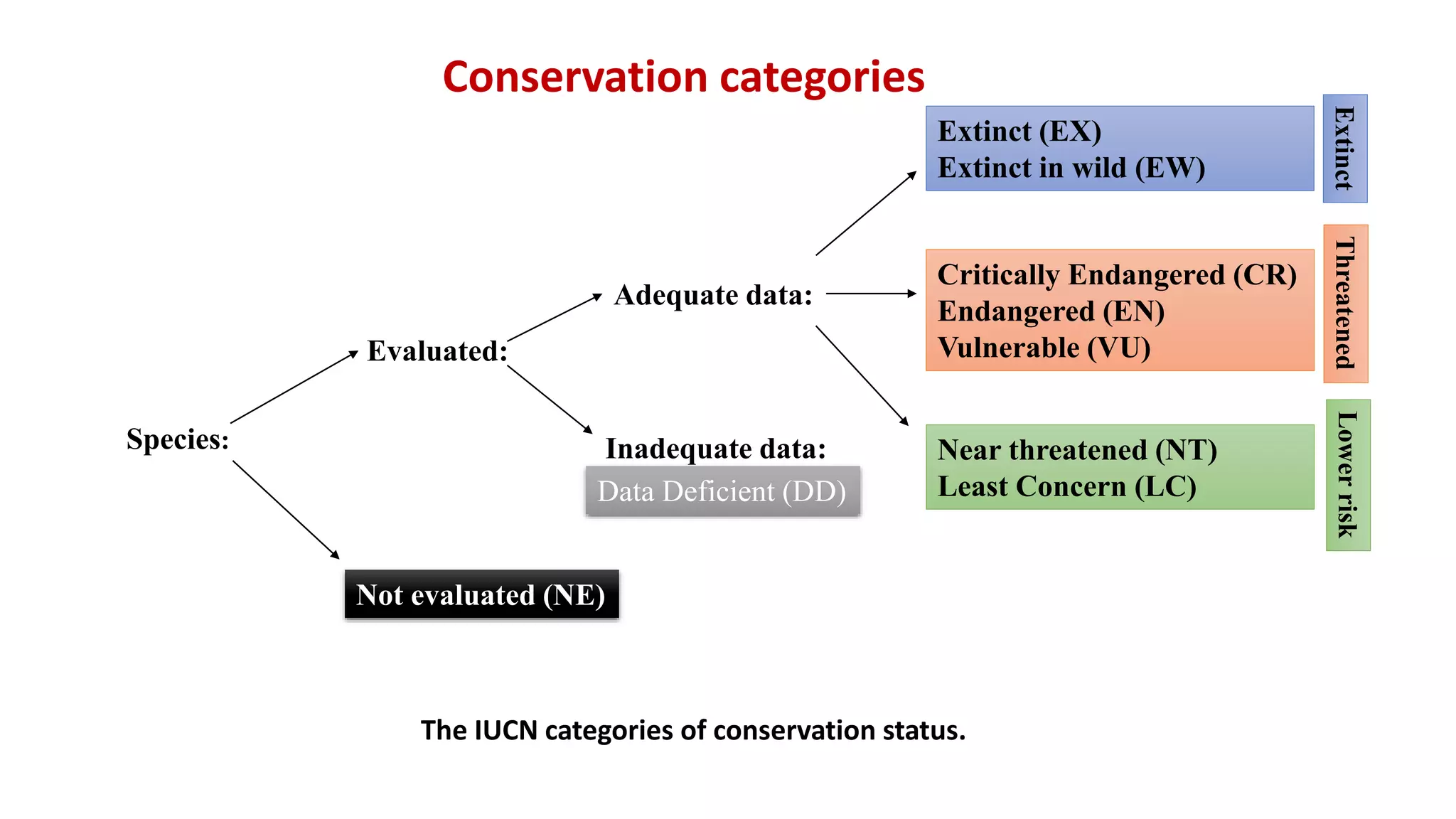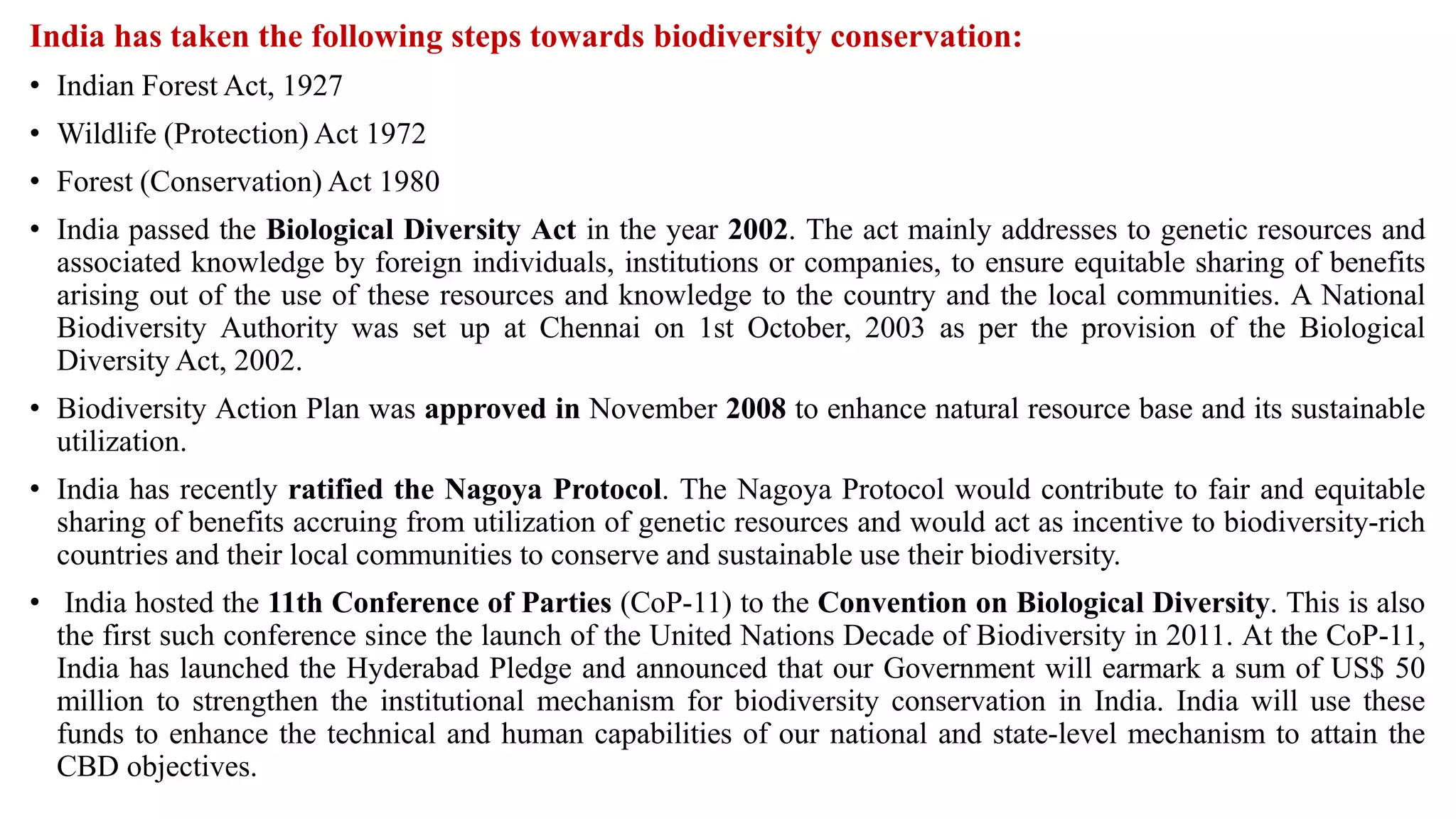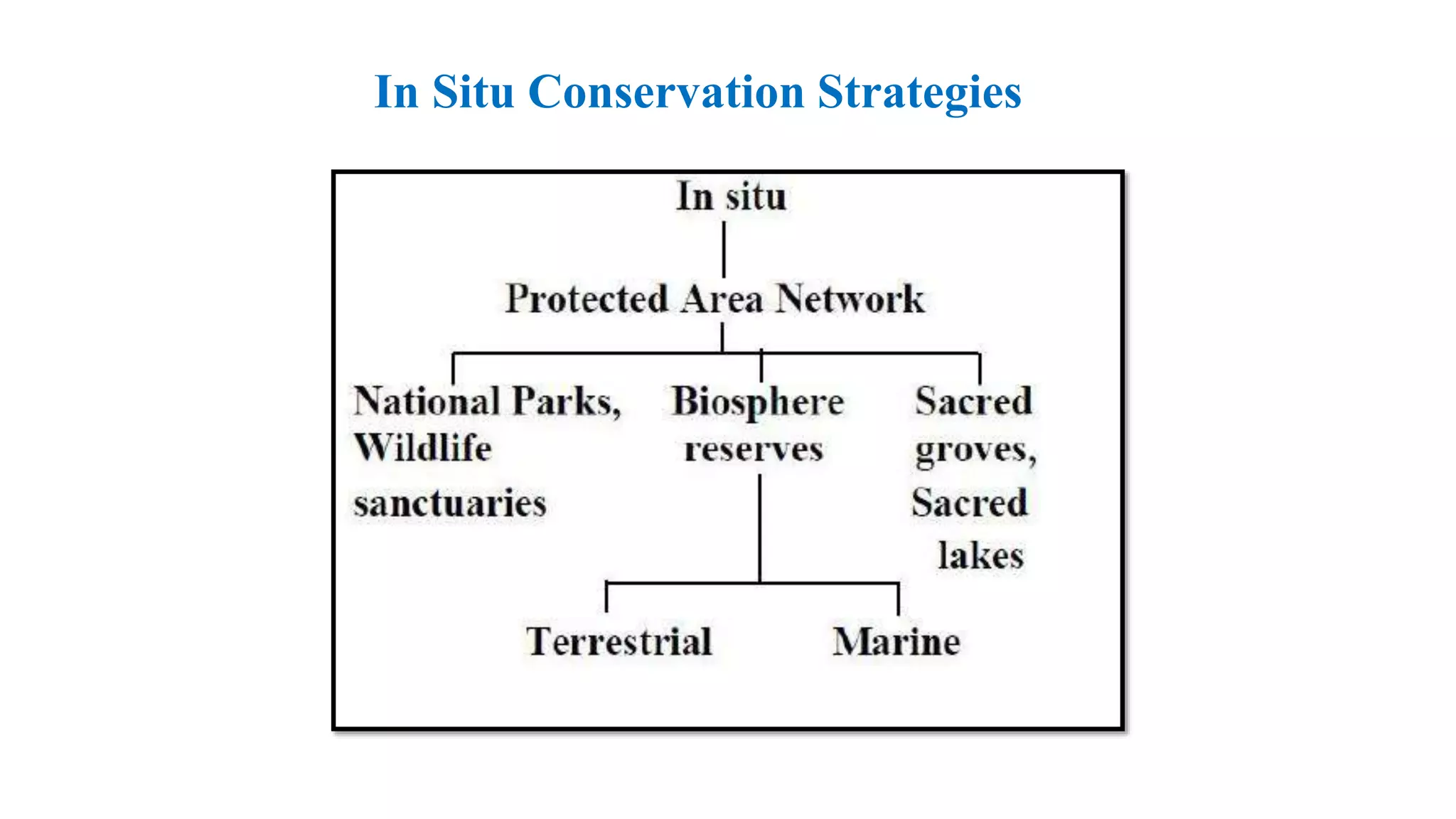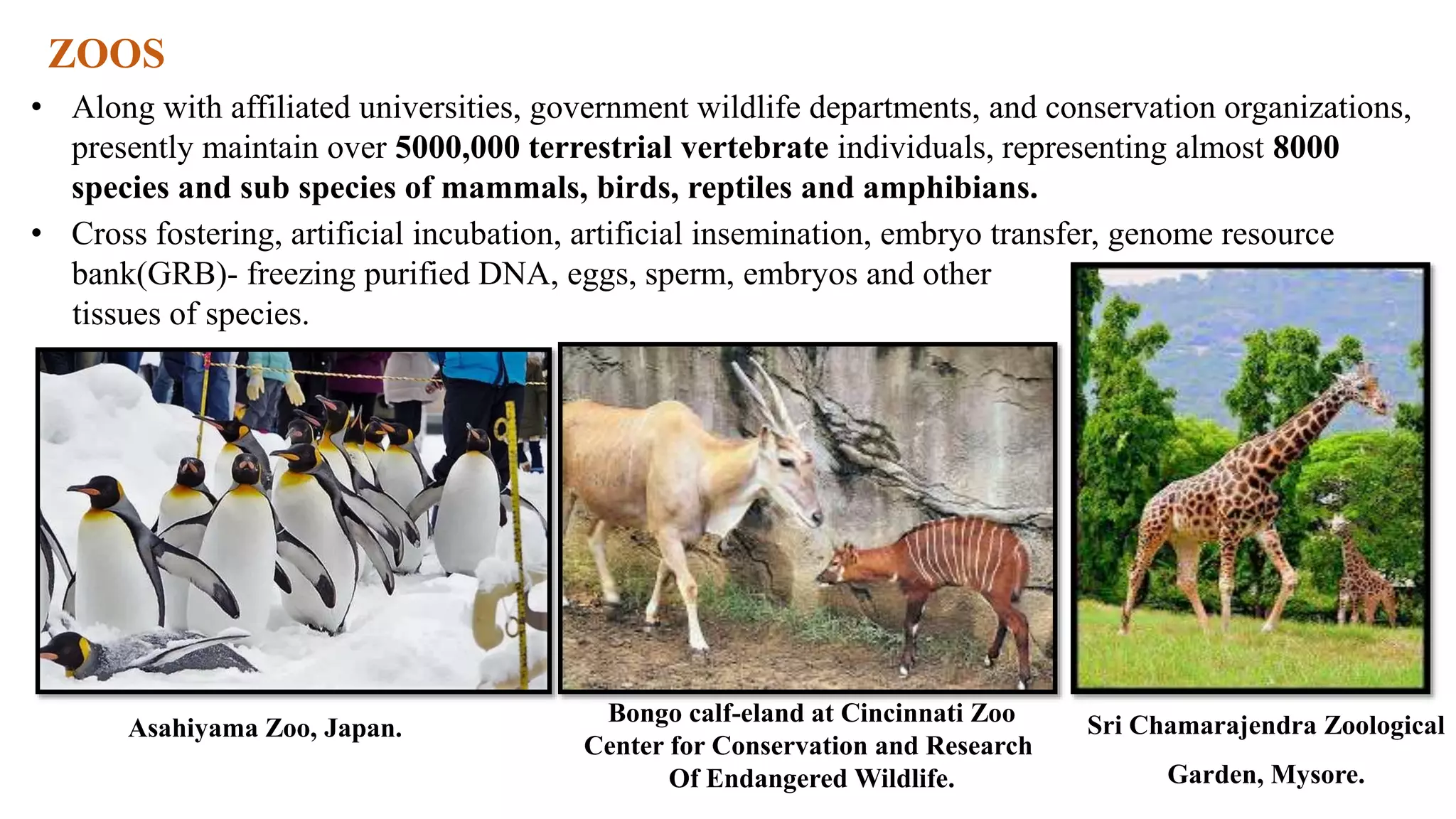The document outlines biodiversity conservation strategies, emphasizing the importance of biodiversity for human existence and the threats it faces from human activities. It discusses various methods for studying populations, international agreements like CITES and CMS, and national laws in India aimed at conservation efforts. The conclusion highlights the necessity for both in situ and ex situ conservation methods to protect biodiversity effectively.




























